|
|
|
|
|
|
 |
| KEYNOTE |
|
 |
| . |
|
|
Pablo Alonso Gonzalez
University of Oviedo, Spain
Keynote – Plenary Session
Pablo Alonso González holds a Distinguished Researcher position at the University of Oviedo (Spain) where he leads the Quantum Nanooptics Lab. He obtained his PhD degree in Physics from the Universidad Autónoma de Madrid (2009) carrying out his research at the Microelectronics Institute of Madrid (IMM-CNM-CSIC). From 2009 to 2015 he was post-doctoral researcher at the Nanooptics group at CIC nanoGUNE in San Sebastian (Basque Country, Spain). Alonso-González´s research activities are focused on materials science and nanophotonics with special emphasis on the study of the opto-electronic properties of novel 2D materials at the nanoscale. In 2014 he received the Spanish Royal Society of Physics (RSEF-BBVA) prize in the category of young experimental scientist. In 2016 he was awarded with a Starting Grant project focused on 2D nano-optics from the European Research Council (ERC).
|
|
|
|
|
 |
| INVITED |
|
 |
| . |
|
|
Pedro Alpuim
INL, Portugal
Invited – Plenary Session
P. Alpuim is group leader of 2D Materials and Devices at the International Iberian Nanotechnology Laboratory (INL), Braga, and professor at the Department of Physics of the University of Minho (UM). He holds a Master in Physics (UM, 1995), and a PhD in Materials Engineering from the Technical University of Lisbon (IST, 2003) where he worked in thin-film silicon devices for flexible electronics. The 2D Materials and Devices group investigates the growth of graphene and other 2D materials by chemical vapor deposition (CVD), fabricates graphene devices at the wafer scale for bio-sensing applications, and van der Waals heterostructures for optoelectronics. His research interests include graphene plasmonics, graphene inks and pastes for large-area electronics, photon emitters on demand from hBN, and different types of sensors based on transition-metal di-chalcogenides
|
|
|
|
|
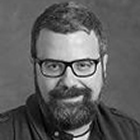 |
| KEYNOTE |
|
 |
| . |
|
|
Giuseppe Battaglia
IBEC, Spain
Keynote – Plenary Session
Giuseppe Battaglia is Professor of Molecular Bionics. His research is focused on the investigation of the specific design rules behind inter/intramolecular interactions and self-assembly of soft matter systems combining synthetic and supramolecular chemistry. In analogy to medical Bionics, where engineering and physical science converge to the design of replacement and/or enhancement of malfunctioning body parts, Prof Battaglia and his team apply molecular engineering and nanotechnology tools to copy and/or improve biological structures such as viruses for several applications including biotechnology, drug and gene delivery, diagnostic tools and cell engineering scaffolds. He has worked at UCL since 2013. Before this, he held positions as Lecturer -2006, Senior Lecturer -2009 and Professor -2011 in the Departments of Materials Sci. Eng. (2006-2009) and Biomedical Science (2009-2013) at the University of Sheffield. Prof Battaglia holds a Laurea in Chemical Engineering from University of Palermo (Italy) and a PhD in Physical Chemistry from the University of Sheffield.
|
|
|
|
|
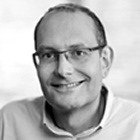 |
| KEYNOTE |
|
 |
| . |
|
|
Remi Carminati
ESPCI Paris / PSL University, France
Keynote – Plenary Session
Rémi Carminati is a Professor of Physics at ESPCI Paris. His research activity is carried out at the Langevin Institute (http://www.institut-langevin.espci.fr), where he leads the group of Mesoscopic and Theoretical Optics. His works cover the fields of nanophotonics and light scattering in complex media. Rémi Carminati received the Fabry-de-Gramont prize of the French Optical Society in 2006 and the Research award from the iXCore Research Foundation in 2009. He was elected a Fellow of the Optical Society of America in 2015.
|
|
|
|
|
 |
| KEYNOTE |
|
 |
| . |
|
|
Manish Chhowalla
University of Cambridge, UK
Keynote – Plenary Session
Manish Chhowalla is the Goldsmiths' Professor of Materials Science and the Director of the Sir Henry Royce Materials Institute at Cambridge. Prior to Cambridge, Prof. Chhowalla was a Distinguished Professor at Rutgers University in New Jersey, USA. Before that, he was a Royal Academy of Engineering Postdoctoral Fellow and a doctoral student in the Electrical Engineering Department at the University Cambridge and Churchill College. His research interests are in the fundamental studies of atomically thin two-dimensional transition metal dichalcogenides (TMDs). In particular, his group studies the optical and electronic properties of different phases of 2D TMDs. He is one of the most cited researchers in the field, appearing on the Clarivate highly cited researchers since 2016. Prof Chhowalla has numerous collaborations in China.
|
|
|
|
|
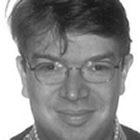 |
| KEYNOTE |
|
 |
| . |
|
|
Jérôme Cornil
Université de Mons, Belgium
Keynote – Plenary Session
Jérôme Cornil received a PhD in Chemistry from the University of Mons-Hainaut (Belgium) in 1996 under the supervision of Jean-Luc Brédas.After postdoctoral stays at the University of California at Santa Barbara (with A.J. Heeger) and at MIT Boston (with R.S. Silbey), he became a senior researcher of the Belgian National Fund for Scientific Research (FNRS) in 2000. His research interests mostly deal with the theoretical characterization at the atomistic level of the structural and electronic properties of organic and hybrid materials in their bulk or at interfaces in relation to their use in energy applications.
|
|
|
|
|
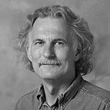 |
| PLENARY |
|
 |
| . |
|
|
Walt A de Heer
Georgia Tech, USA
Plenary Talk
Walt A de Heer was born in the Netherlands, raised on the island of Aruba, and received his university degrees at University of California, Berkeley. After 10 years at the EPFL (Lausanne Switzerland) he joined the School of Physics at the Georgia Institute of Technology where he is currently a Regents’ Professor of Physics. Starting in Berkeley, he has been productive in various nanoscience related fields. He made seminal contributions to the physics of metal nanoclusters; carbon nanotubes; and graphene electronics. His pioneering epitaxial graphene program, initiated in 2001, focuses on developing a viable silicon carbide platform for graphene-based nanoelectronics. De Heer has an h-index of 85, and he has received the Web of Science Group’s Highly Cited Researcher Award yearly from 2014-2019, placing him among the top 0.1% of researchers worldwide
|
|
|
|
|
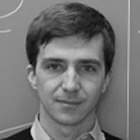 |
| INVITED |
|
 |
| . |
|
|
Ion Errea
CFM-UPV, CSIC, Spain
Invited – Plenary Session
Ion Errea currently leads the Quantum Theory of Materials group at the Materials Physics Center (CFM, CSIC-UPV/EHU). He is a a lecturer at the University of the Basque Country and also an associate researcher of the Donostia International Physics Center (DIPC). His work is mostly dedicated to the development of new first principles technique to calculate complex properties of solids and to apply them for physical systems of interest. In the last years, he has worked intensely on the superconductivity of hydrogen-based compounds, thermoelctric materials, and bulk and monolayer systems with charge-density-wave transitions.
|
|
|
|
|
 |
| KEYNOTE |
|
 |
| . |
|
|
Andrea Ferrari
Cambridge Graphene Centre, University of Cambridge, UK
Keynote – Plenary Session
Andrea C. Ferrari earned a PhD in electrical engineering from Cambridge University, after a Laurea in nuclear engineering from Politecnico di Milano, Italy. He is Professor of Nanotechnology and the Director of the Cambridge Graphene Centre and of the EPSRC Centre for Doctoral Training in Graphene Technology. He is Fellow of Pembroke College, the American Physical Society, the Institute of Physics and the Materials Research Society. His research interests include nanomaterials growth, modelling, characterization, and devices. He was awarded the Royal Society Brian Mercer Award for Innovation, the Marie Curie Excellence Award, the Philip Leverhulme Prize, The EU-40 Materials Prize, The Royal Society Wolfson Research Merit Award. He is also the Chairman of the Executive Board of the EU Graphene Flagship.
|
|
|
|
|
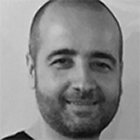 |
| KEYNOTE |
|
 |
| . |
|
|
Gianluca Fiori
University of Pisa, Italy
Keynote – Plenary Session
Gianluca Fiori is Full Professor of Electronics at the University of Pisa, Italy. He is the leading developer of the open-source code NanoTCAD ViDES. His research interests include the simulation of 2D material-based transistors and the performance assessment of novel nanoscale devices. Currently GF is also involved in the fabrication and electrical characterization of flexible devices realized through printing techniques, while exploiting two-dimensional materials.
|
|
|
|
|
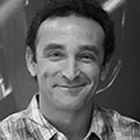 |
| KEYNOTE |
|
 |
| . |
|
|
Javier García de Abajo
ICREA - ICFO, Spain
Keynote – Plenary Session
Javier García de Abajo received his PhD from the University of the Basque Country in 1993 and then visited Berkeley National Lab for three years. He was a Research Professor at the Spanish CSIC and in 2013 moved to ICFO-Institut de Ciencies Fotoniques (Barcelona) as an ICREA Research Professor and Group Leader. He is Fellow of both the American Physical Society and the Optical Society of America and has recently been awarded the Science of Light Prize by the European Physical Society. García de Abajo has co-authored 380+ articles cited 26,000+ times with a h index of 79 (Sept 2019 WoK data), including contributions on different aspects of surface science, nanophotonics, and electron microscope spectroscopies.
|
|
|
|
|
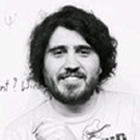 |
| KEYNOTE |
|
 |
| . |
|
|
Vincenzo Giannini
CSIC, Spain
Keynote – Plenary Session
My scientific interests rely on theoretical light-matter interactions, in particular, theoretical linear and nonlinear Plasmonics and Nanophotonics.
I started my scientific adventure as Physics undergraduate students at the University of Pisa. Later, thanks to my love for travelling I decided to move to Spain for a Ph.D. program. I enjoyed it in Madrid at the Spanish research council (CSIC). The story followed with a postdoc in Amsterdam and a Marie Curie fellowship at the Imperial College London. In June 2014, I started my group at the Imperial College London in the Condensed Matter Theory section and recently I accepted an offer in Spain at the CSIC.
|
|
|
|
|
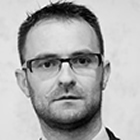 |
| INVITED |
|
 |
| . |
|
|
Julio Gomez
Avanzare, Spain
Invited – Plenary Session
Julio Gomez is the Founder of AVANZARE, company producer of graphene and other 2D materials and its composites . He is primarily interested in the mechanical properties of atomically thin materials such as graphene. He received his B.S. degree in Chemistry from Universidad Complutense de Madrid (1995), receiving the and a Ph.D. in Chemistry (2000) from University of La Rioja where he studied the preparation and electrical and optical properties of nanosize metallic clusters, and a postdoctoral researcher position in the Laboratoire de Synthèse Organique, University of Nantes-CNRS After finishing his Ph.D, he spent 3 years as assistant Professor in Universidad de La Rioja and 2 years as an Area Manager in the research centre CIDETEC studying electrochemical systems before joining AVANZARE at the end of 2004. His awards include among others the best B.S. degree in Chemistry in 1995 award in the University Complutense de Madrid, the best PhD degree in Science and Technology award in the University of La Rioja from the years 1999-2000, National award Entrepreneur of the year 2008 in Spain, best product NANOAWARDS 2008 (USA), F&S best practices in innovation 2013 (UK). Author of 47 papers H-index 22.
|
|
|
|
|
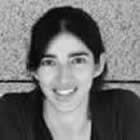 |
| INVITED |
|
 |
| . |
|
|
Lucía Gutiérrez
UNIZAR, Spain
Invited – Plenary Session
Lucía Gutiérrez is a Ramón y Cajal Research Fellow from the Universidad de Zaragoza. In the past she has also worked in other three institutions: Queen Mary University of London in the UK, the Materials Science Institute of Madrid (ICMM/CSIC) in Spain and The University of Western Australia in Australia.
Her work is focused on the synthesis, characterization and biomedical applications of magnetic nanoparticles. Her current work is focused on the evaluation of the heating properties of these materials to be used for cancer treatment. She is also interested on the transformations that these materials suffer in biological matrices.
|
|
|
|
|
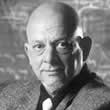 |
| PLENARY |
|
 |
| . |
|
|
Uzi Landman
Georgia Tech, USA
Plenary Talk
Uzi Landman was born and raised in Israel where he received his education. He obtained a B.Sc degree from the Hebrew University in Jerusalem, a M.Sc. from the Weizmann Institute of Science and a D.Sc. from the Israel Institute of Technology (Technion). In 1977 he joined the School of Physics at the Georgia Institute of Technology (Gatech) in Atlanta, where he is currently a Regents' and Institute Professor, holding the Callaway Chair and serving as the founding director of the Gatech Center for Computational Materials Science. His main areas of research are in condensed matter physics and materials science, with an emphasis on the development and use of computational methodologies. Landman have published over 400 articles in these areas, earning over 39,000 literature citations (h-index, 103) being one of the most cited scientists worldwide.
|
|
|
|
|
 |
| KEYNOTE |
|
 |
| . |
|
|
Monica Lira-Cantú
ICN2, Spain
Keynote – Plenary Session
Monica Lira-Cantu received her PhD in Chemistry (Materials Science) in 1997, from 1999-2001 she worked as permanent research scientist at ExxonMobil Research & Engineering (U.S.A.). Her work in the area of Photovoltaics stability/degradation initiated in 2004 during a scientific stay with Prof. Frederik Krebs at DTU in Denmark, where she worked on the long-term stability of polymer/oxide solar cells. She has been visiting scientist with Prof. Truls Norby at UNorway (2003) and with Prof. Shozo Yanagida at CAST in Japan (2006). She is currently Group Leader of the Nanostructured Materials for Photovoltaic Energy Group at the Catalan Institute of Nanoscience and Nanotechnology (ICN2) in Barcelona (Spain).
|
|
|
|
|
 |
| KEYNOTE |
|
 |
| . |
|
|
Luis M. Liz-Marzan
CIC biomaGUNE, Spain
Keynote – Plenary Session
Luis Liz-Marzán is Ikerbasque Professor and Scientific Director of the Center for Cooperative Research in Biomaterials, CIC biomaGUNE, in San Sebastian (Spain). He graduated in chemistry from the University of Santiago de Compostela, was postdoc at Utrecht University and Professor at the University of Vigo (1995–2012), as well as Invited Professor at various academic institutions worldwide.
Prof. Liz-Marzán is co-author of over 450 publications and 8 patents, has delivered over 400 invited lectures and received numerous research awards. He is currently associate editor of ACS Nano and serves in the editorial boards of various other journals, including Science. His major research activity is devoted to understanding the growth mechanisms of metal nanocrystals, to tailor their surface chemistry and thereby directing their self-assembly. He also works on the design of biomedical applications based on the plasmonic properties of well-defined metal nanoparticles and nanostructures, including surface enhanced Raman scattering and hyperthermia.
|
|
|
|
|
 |
| KEYNOTE |
|
 |
| . |
|
|
Iraida Loinaz
CIDETEC, Spain
Keynote – Plenary Session
Dr. Loinaz currently is the Health Business Developement Manager of CIDETEC. She has specialized in Organic Chemistry and her Ph.D. thesis focused on peptidic synthesis and synthesis in perfluorocarbon media.
|
|
|
|
|
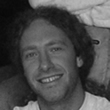 |
| INVITED |
|
 |
| . |
|
|
Manuel Marques
UAM, Spain
Invited – Plenary Session
Manuel Marqués obtained his B.A in physics at Universidad Complutense de Madrid in 1995 and was awarded with an extraordinary Ph.D. prize in physics at Universidad Autónoma de Madrid in 2000 under the supervision of Prof. Julio Gonzalo. Fullbright fellow at Boston University from 2001 to 2003 where he performed a postdoctoral research in the group of Prof. Gene Stanley. In 2003 he was awarded with a Ramón y Cajal appointment at the Universidad Autónoma de Madrid. Manuel Marqués is now Associate Professor in the Material Physics Department and member of the Institute of Condensed Matter Physics (IFIMAC). His research interests are mainly focused on phase transitions and light matter interactions.
|
|
|
|
|
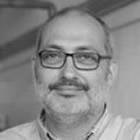 |
| KEYNOTE |
|
 |
| . |
|
|
Lluis F. Marsal
URV, Spain
Keynote – Plenary Session
Lluís F. Marsal is Full Professor and Distinguished Professor at the Department of Electronic, Electric and Automatic Engineering of the Universitat Rovira i Virgili, Spain. He obtained his Ph.D. degree in Physics in 1997 from the Universitat Politècnica de Catalunya, Spain. He was postdoctoral researcher at the Department of Electrical and Computer Engineering, University of Waterloo, Ontario, Canada.
In 2014, he received the ICREA Academia Award (the highest award for university professors in Catalonia, from ICREA Institute). He is a senior member of the Institute of Electrical and Electronics Engineers and of the Optical Society of America. He is member of advisory and technical committees in several international and national conferences and has been visiting professor at several universities and research institutions. He has co-authored more than 200 publications in international refereed journals, 2 books, 5 book chapters and holds three patents.
His current research interests focus on organic and hybrid solar cells and nanostructured materials for optoelectronic devices and low–cost technologies based on micro- and nanoporous materials for biosensing and bio-applications.
|
|
|
|
|
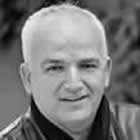 |
| KEYNOTE |
|
 |
| . |
|
|
Arben Merkoci
ICREA-ICN2, Spain
Keynote – Plenary Session
Arben Merkoçi is ICREA Professor and director of the Nanobioelectronics & Biosensors Group at Catalan Institute of Nanoscience and Nanotechnology (ICN2), part of Barcelona Institute of Science and technology (BIST) in Barcelona, Spain. After his PhD (1991) at Tirana University (Albania), in the topic of Ion-Selective-Electrodes (ISEs) Dr. Merkoçi worked as postdoc and senior researcher/invited professor in the field of nanobiosensors and lab-on-a-chip technologies in Italy, Spain, USA and since 2006 at ICN2. Prof. Merkoçi research is focused on the design and application of cutting edge nanotechnology and nanoscience-based cost/efficient biosensors. The nanobiosensors his group is developing involve integration of (bio)receptors with micro- and nanostructures/motors and are applied in diagnostics, environmental monitoring or safety and security. He has published around 300 peer review research papers, supervised 30 PhD students and has been invited to give plenary lectures and keynote speeches in around 200 occasions in various countries. He is co-founder of two spin-off companies, PaperDrop dedicated to nanodiagnostics and GraphenicaLab to electronic printing with interest for sensors and biosensors.
|
|
|
|
|
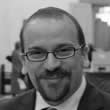 |
| KEYNOTE |
|
 |
| . |
|
|
Lorenzo Moroni
Maastricht University, The Netherlands
Keynote – Plenary Session
Prof. Dr. Lorenzo Moroni studied Biomedical Engineering at Polytechnic University of Milan, Italy, and Nanoscale Sciences at Chalmers Technical University, Sweden. He received his Ph.D. cum laude in 2006 at University of Twente on 3D scaffolds for osteochondral regeneration, for which he was awarded the European doctorate award in Biomaterials and Tissue Engineering from the European Society of Biomaterials (ESB). In 2007, he worked at Johns Hopkins University as a post-doctoral fellow in the Elisseeff lab, focusing on hydrogels and stem cells. In 2008, he was appointed the R&D director of the Musculoskeletal Tissue Bank of Rizzoli Orthopedic Institute, where he investigated the use of stem cells from alternative sources for cell banking, and the development of novel bioactive scaffolds for skeletal regeneration. From 2009 till 2014, he joined again University of Twente, where he got tenured in the Tissue Regeneration department.
Since 2014 he works at Maastricht University, where he is a founding member of the MERLN Institute for Technology-Inspired Regenerative Medicine. In 2016, he became full professor in biofabrication for regenerative medicine.
His research group interests aim at developing biofabrication technologies to generate libraries of 3D scaffolds able to control cell fate, with applications spanning from skeletal to vascular, neural, and organ regeneration.
In 2014, he received the prestigious Jean Leray award for outstanding young principal investigators from the ESB and the ERC starting grant. In 2016, he also received the prestigious Young Scientist Award for outstanding principal investigators from TERMIS. In 2017, he was elected as faculty of the Young Academy of Europe and in the top 100 Italian scientists within 40 worldwide by the European Institute of Italian Culture. Since 2019, he is chair of the Complex Tissue Regeneration department and vice-director of MERLN. From his research efforts, 3 products have already reached the market
|
|
|
|
|
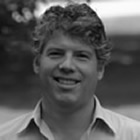 |
| KEYNOTE |
|
 |
| . |
|
|
Otto L. Muskens
University of Southampton, UK
Keynote – Plenary Session
Otto Muskens is a Professor of Physics at University of Southampton. He received his PhD cum laude from University of Utrecht in 2004 on ultrafast shock waves in crystals. Subsequently he worked as a postdoc at University Bordeaux, Philips Research and AMOLF Amsterdam. Since 2009 he leads the Integrated Nanophotonics group in Southampton, where his research involves both fundamental understanding and applications of nanophotonics in various fields. In 2012 he was awarded a 5-year fellowship by EPSRC to develop on-chip nanophotonic devices exploiting complexity and wave shaping. In 2016 he held the Debye visiting chair at University of Utrecht. His interests include plasmonics, nanoantennas, meta-surfaces, complex media, nanobiophotonics, and photonic integrated circuits.
|
|
|
|
|
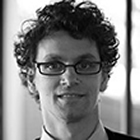 |
| KEYNOTE |
|
 |
| . |
|
|
Daniel Neumaier
University of Wuppertal, Germany
Keynote – Plenary Session
Daniel Neumaier received the PhD degree in 2009 from the University of Regensburg. From 2006 until 2009 he worked at the University of Regensburg in the field of III/V spintronics. Since 2009 he his head of the Graphene-Group at AMO GmbH, a research foundry located in Aachen, Germany. He has managed several research projects on graphene and is currently leading the work-package on Electronic Devices in the Flagship-Project Graphene.
|
|
|
|
|
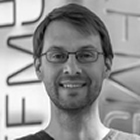 |
| KEYNOTE |
|
 |
| . |
|
|
Mikhail Otrokov
CFM-CSIC/UPV, Spain
Keynote – Plenary Session
I am Ikerbasque Research Fellow at Materials Physics Center in Donostia - San Sebastian. Obtained my PhD in Condensed Matter Physics in 2011 at Tomsk State University (Russia), soon after which I moved to Donostia - San Sebastian as a post-doc, first at the Donostia International Physics Center and then at the Materials Physics Center. In 2018 I got the Ikerbasque Research Fellow position. My expertise is the computational materials science and condensed-matter physics. My current research activity is mainly focused on magnetic topological insulators, though I am also interested in the electronic structure of the graphene-based nanostructures, rare-earth intermetallics, and other systems.
|
|
|
|
|
 |
| KEYNOTE |
|
 |
| . |
|
|
Josetxo Pomposo
CFM-UPV, CSIC, Spain
Keynote – Plenary Session
José A. Pomposo is currently IKERBASQUE Research Professor at the Materials Physics Center-MPC, a joint center of the University of the Basque Country-UPV/EHU and the Spanish National Research Council-CSIC. His research interests include the synthesis of uniform soft nano-objects, research on the structure, dynamics and self-assembly behavior of complex single-chain nano-objects and the construction of hybrid organic nanostructures. José A. Pomposo received his PhD from the University of the Basque Country in 1994. After more than 25 years’ research experience in materials science, including heading the Cidetec New Materials Department for 12 years and 1 year at Donostia International Physics Center (DIPC), currently, he is IKERBASQUE Research Professor in charge of the Chemistry Laboratory oriented to Polymer Synthesis of the Materials Physics Center-MPC. José A. Pomposo has more than 150 high impact scientific publications (Chem. Soc. Rev., Adv. Mater., Chem. Commun., Macromolecules, ACS MacroLett., etc.), 9 international patents and he was selected as Editor of the first book on Single-Chain Polymer Nanoparticles published by Wiley in 2017.
|
|
|
|
|
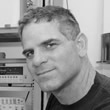 |
| KEYNOTE |
|
 |
| . |
|
|
Danny Porath
The Hebrew University of Jerusalem, Israel
Keynote – Plenary Session
Prof. Danny Porath Studied for BSc in Physics, Mathematics and Electronics at the Hebrew University. Received his Ph.D in Physics from the Hebrew University in 1997. Did his postdoc at Delft University of Technology with Prof. Cees Dekker and established his group at the Institute of Chemistry of The Hebrew University of Jerusalem in 2001. The group research interests include: DNA-Based Nanoelectronics, scanning probe microscopy and spectroscopy of single molecules, electrical transport measurements in single molecules, nanoelectronics, DNA sequencing and biomarker detection. Member of the Editorial Board of “Self Assembly and Molecular Electronics and of “Scientific Report” from Nature Publishing Group. Received excellent postdoctoral award of the American Vacuum Society Meeting, Boston 2000, and The Israel Chemical Society Prize for the Outstanding Young Scientist in 2007. Holds the Etta and Paul Schankerman Chair of Molecular Biomedicine since 2014. Served as the Director of the Hebrew University Center for Nanoscience and Nanotechnology 2011-2014. Currently serves and the Vice Dean Research of the Faculty of Science.
|
|
|
|
|
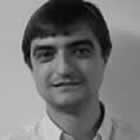 |
| KEYNOTE |
|
 |
| . |
|
|
Javier Ramón Azcón
IBEC, Spain
Keynote – Plenary Session
From 2017, ICREA Professor Javier Ramon is Junior Group Leader at the Institute of Bioengineering of Catalonia (IBEC) in Barcelona, Spain. After doctorate he performed a post-doc stay under the direction of professor Mizutani at Hyogo University in Japan on lithography fabrication, microfluidics and dielectrophoresis technic (2009-2011). After this post-doctoral stay in Hyogo University (2011) he was hired by the Advanced Institute for Materials Research (AIMR) at Tohoku University as Assistant Researcher. The AIMR-WPI institute is the third most relevant institute in Japan and one worldwide reference in material science. He joined the group of Prof. Matsue in the device/ systems group and in April 2013 he was promoted to Assistant Professor. In this position, he was working in the integration of biosensors technology with stem cell, biomaterials and tissue engineering research (2011-2014).
|
|
|
|
|
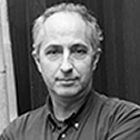 |
| KEYNOTE |
|
 |
| . |
|
|
Niek van Hulst
ICREA - ICFO
, Spain
Keynote – Plenary Session
Following study in Astronomy and Physics, I obtained my PhD (1986) in Molecular & Laser-Physics at the University of Nijmegen (the Netherlands), on microwave-laser double resonance molecular-beam spectroscopy. After research in non-linear optics of organic materials, integrated optics, atomic force and near-field optical microscopy, since 1997 full Professor at MESA+ Institute for NanoTechnology, University of Twente (the Netherlands) with focus on single molecule detection and scanning probe technology. In 2005, attracted by the Catalan quality-based science policy, I started as ICREA Research Professor and senior group leader at ICFO - the Institute of Photonic Sciences, within The Barcelona Institute of Science & Technology; also I am Head Academic Programs and NanoFabrication Lab at ICFO. Recipient of 2003 Körber European Science Award, 2010 City of Barcelona Prize; ERC Advanced Grants in 2010 and 2015, PoC in 2017; 2017 European Physical Society Prize.
|
|
|
|
|
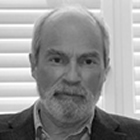 |
| INVITED |
|
 |
| . |
|
|
Rune Wendelbo
Abalonyx, Norway
Invited – Plenary Session
Rune Wendelbo is CEO of Abalonyx AS and Graphene Batteries AS. He holds a PhD from the University of Oslo, 1987, and has previously worked with R&D at Sintefs department for catalysis in Oslo, founded Abalonyx AS in 2005, now a well established producer of graphene oxide and Graphene oxide derivatives. He has worked with graphene oxide production and applications in Abalonyx, specifically with scale-up of a safe production process and development of a range of graphene oxide derivatives as well as a range of applications. In 2012 he established Graphene Batteries AS together with Dr. Rahul Fotedar, a company engaged in the development of new and improved cathode materials for batteries taking advantage of our knowledge and access to graphene derivatives. He has about 30 publications and about 20 patent and received ”SINTEFs prize for excellent research” in 2002.
|
|
|
|
|
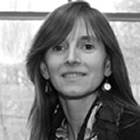 |
| INVITED |
|
 |
| . |
|
|
Amaia Zurutuza
Graphenea, Spain
Invited – Plenary Session
She received her Ph.D. degree in polymer chemistry from the University of Strathclyde (Glasgow, UK) in 2002. After two Postdoctoral Research Fellowships working in two European projects related to molecularly imprinted polymers. In 2004, she joined Ferring Pharmaceuticals (previously Controlled Therapeutics) where she worked in the research of new controlled drug delivery systems as a Senior Polymer Scientist. Her contribution led to the granting of three patents in novel biodegradable and biostable polymers for the controlled release of active compounds. In 2010, she became the Scientific Director of Graphenea. At Graphenea, she leads the research and development activities on graphene-based materials. Since joining Graphenea, she has so far filed for ten patents and published in Nature and Science.
|
|
|
|
|
| |
|
|
|
|
|
|
|
© Phantoms Foundation 2020 |
|
|
|